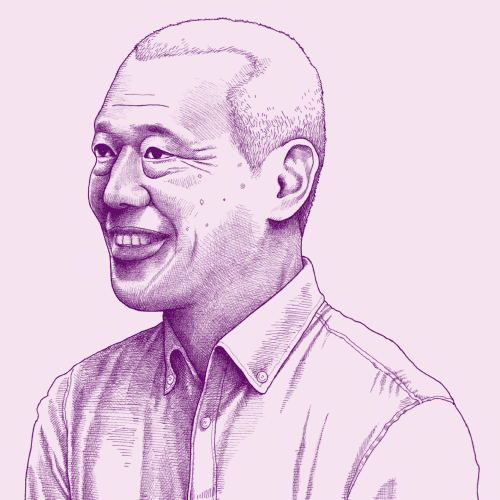These toolkits were developed with the WIC Technology Resource Group, a resource and learning partnership between the National WIC Association and Nava, with contributions from Code for America. Many thanks to Genevieve Gaudet and Sasha Reid for their invaluable contributions.
Technology can be used to achieve meaningful program outcomes when you focus on what people need, approach projects one manageable part at a time, and measure outcomes.
This toolkit is the first of four that will walk you through human-centered and agile processes to help you achieve meaningful program outcomes with every new technology project. We recommend using them in this order: Setting goals, Building technology, Engaging users, and Measuring success.
This toolkit can help you:
- Use technology to achieve meaningful program outcomes
- Center technology development around what people really need
Human-centered design is:
a methodology for designing and building unified, clear, and respectful products and services that incorporates feedback from the people you are designing for throughout the design process. Its core principles are to build an explicit understanding of users, involve them throughout the development process, test and iterate frequently, and address the whole user experience of a product or service.
Agile development is:
a collection of project management and software development practices that shorten feedback loops and rely on constant feedback, iteration, and collaboration to improve products and help teams quickly, safely, and cost-effectively build software that meets people’s needs.
Linking technology products to program outcomes
Before beginning a technology project, you should define what program outcomes you want the technology to help you achieve. This may seem super obvious. But, it can be very easy for the goal of technology projects to just be about completing the development of the technology.
Technology itself or modernization should not be the end-goal of any technology project. If tech is used to modernize a program, but no progress towards your mission is made, or worse, there are unintended consequences for your mission, what was the purpose of spending all that money to modernize?
Technology projects should also not just be about completing a checklist of tasks so that a technology product functions. Technology can function, but that doesn’t guarantee that it solves the problems you’re trying to solve or functions optimally to solve the desired problem.
Instead, technology — developed and implemented effectively — is a tool for achieving program goals. In short: technology success should be linked to program success. For example, if you’re looking to reduce staff burden and improve client experience with a scheduling tool in order to improve client enrollment and retention, then it’s important that you develop, implement, and measure that tool against the short-term outcomes of reducing staff burden and improving client experience as well as against the longer term outcomes of client enrollment and retention.
Try it: Link your technology project to short- and long-term outcomes
Define the problems you want to solve with technology.
When choosing a problem, start small. Think about the short-term operational and experience challenges that technology might help you solve.
Then think about how these operational and experience challenges could also be contributing to larger challenges within the program.
For example, staff are not able to review income documents for recertification because participants forget to bring the documents to their WIC certification visit, and therefore the participants do not get recertified to remain in the program. This challenging experience could also be contributing to participants dropping out of the program and not returning.
Define one short-term outcome related to program operations or experience.
Think about those operational and experience challenges. What is the outcome you’d like to see?
For example: Given the above example, the outcome you might like to see is easy and timely review of documents.
Define one medium-term or long-term outcome related to your program’s reach and mission.
Think about some of the downstream outcomes you’d like to see in the program, if you are able to achieve the short-term outcome noted above
For example: Timely recertification and participants have the support they need to achieve their life goals.
Once you’ve defined the problem you hope to solve and the outcomes you hope to achieve, you’re one step closer to linking technology to program outcomes. You’ll be better able to measure the effectiveness of the technology you’re building. And, you can start thinking about exactly what you need to build.
Identifying and centering user needs
To ensure that technology is effective at reaching goals, you need to build things that solve real problems faced by real people. And to do that, you need to start with user needs.
A user is a general term used to refer to anyone who will use the technology product you’re building. For a WIC tool, this can include participants, clinic staff, local agency staff, and state agency staff. But user can be a dehumanizing and anonymizing term, so once you’ve identified who your users are, use more specific words to describe them, e.g. participants, clinic staff, etc.
Every technology project should begin with user needs — what your users need to achieve their goals. If you focus on what your users need, then you’ll never build the wrong thing. If you start with a functional requirement, you risk building something that doesn’t meet people’s needs.
For example, if you start with a functional requirement, you might say something like, this application needs to work on a mobile phone. And you may end up with an application that technically works on a mobile phone but doesn’t make it easy for participants to submit their applications from a mobile phone — when that’s what the application actually needs to do.
So when you’re starting a technology project, it’s helpful to begin by creating a user needs statement. A user need statement describes who the user is, what they are trying to do, and why it’s important to them.
Try it: Create a user need statement
A user need statement often looks like this template:
[USER] needs [DEFINE THE NEED] in order to [DEFINE THEIR GOAL].
For example:
Participants need to be able to easily understand what documents to submit and how in order to certify/re-certify with WIC.
Think about how you would frame the operational or experience problem that you’d like to solve around a user need and write a user need statement. Then, reflect on how the user need statement connects back to the mission of the program and desired program outcomes.
Creating a product vision
Once you understand your user needs and desired outcomes, you can start thinking about the technology that will meet those needs and achieve those desired outcomes in the form of a product vision.
A product is a digital tool, feature, or system that meets a set of business and user (e.g. WIC staff and participants) needs. Examples of products might include WIC shopping apps, online forms to begin the WIC application process, and Management Information Systems.
A vision is the lodestar for a project; it’s the point everyone is driving towards. Your product vision, then, is the vision you want your product to achieve. A product vision is the big picture for a product while user need statements are the strategies you’ll take to get there.
Try it: Write and refine your product vision
A good product vision is clear, brief, long term, and evocative. That is, it’s easy to understand, short enough to remember, oriented around the long term (think 1-3 years), and it evokes an emotional response.
A good starting template for a product vision works like so:
For [USERS] who [DESCRIPTION OF NEEDS], [PRODUCT] will [DESCRIPTION OF BENEFITS].
For example, a first draft of a product vision might look like this:
For families who want to understand if they are eligible for the program and should apply, the application will provide a fast, safe, and accessible means to learn if they are eligible for benefits.
For WIC staff who need to complete many administrative tasks for recertification, the new system will reduce the time it takes to certify participants.
These statements are brief, clear, and long term, but they’re not evocative. Vision statements are more effective when they elicit strong feelings in the team working towards them, which makes them more memorable and easier to identify with. Here are some potential edits:
Parents will know we have their backs when our application gives them a safe and accessible way to quickly learn about what benefits are available to them.
Program staff will have an efficient and delightful workflow that lets them certify participants and get benefits to families in need in minutes.
In the first statement, we’re drawing out feelings of being supported by saying our product will have parents’ backs. In the second, we’re calling out that the workflow for staff needs to be a delight to use in addition to saving time—painting a very different and more compelling picture of success.
As you write your own product vision using the template above, use these questions to revise it until it feels right:
Is it clear? Are any words or phrases fuzzy or opaque? Is there any room for confusion?
Is it long-term? Is it something that you will be working towards for the next 1-3 years?
Is it evocative? What feelings does it evoke? What feelings do you want it to evoke?
Now that you have an understanding of how your goals for a new technology project serve those of your program’s mission, what user needs the technology project should meet, and your larger vision for getting there with a technology product, you’re ready to start thinking about how to actually build the technology. Learn more in Building technology.
About the WIC Technology Resource Group
The WIC Technology Resource Group is a resource and learning partnership between the National WIC Association and Nava, a government technology consultancy and public benefit corporation, and with contributions from Code for America, a nonprofit focused on digital tools for government.
Power your mission with human-centered, agile technology is a series of four toolkits that will walk you through human-centered and agile processes to help you achieve meaningful program outcomes with every new technology project. It includes: Setting goals, Building technology, Engaging users, and Measuring success.
For more resources, visit the WIC Hub.
Written by

Director of partnerships and advocacy

Associate Program Director of Insight & Impact, Code for America

Senior Product Manager
